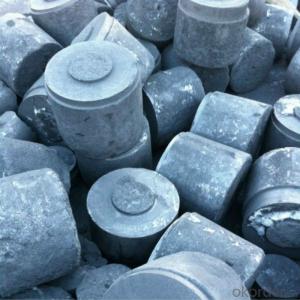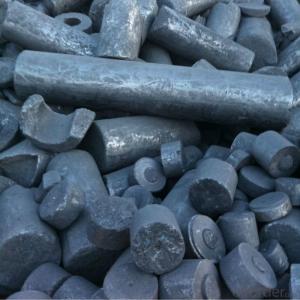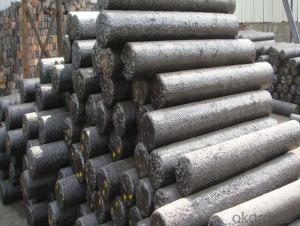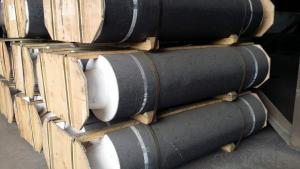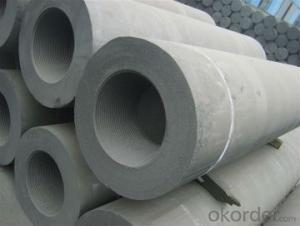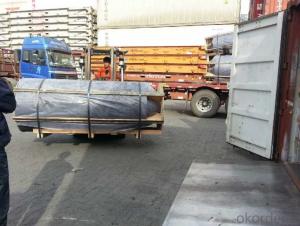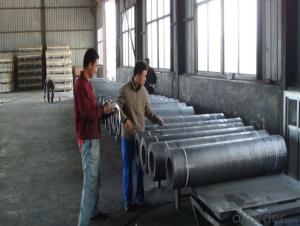Carbon Graphite Electrode RP HD HP UHP Grade
- Loading Port:
- Qingdao
- Payment Terms:
- TT OR LC
- Min Order Qty:
- 10 m.t
- Supply Capability:
- 5000000 m.t/month
OKorder Service Pledge
Quality Product, Order Online Tracking, Timely Delivery
OKorder Financial Service
Credit Rating, Credit Services, Credit Purchasing
You Might Also Like
Specifications:
F.C 98%min and 98.5%min, size: 100mm up
- Description & Application
Electrode block processing of carburant in steelmaking and casting, than ordinary recarburizer absorption rate is high, easy to melt, can efficiently improve the quality of products and reduce the cost.
- Technical Specification
F.C (min) |
| 98% |
S (max) |
| 0.05% |
ASH (max) |
| 1.00% |
Vm (max) |
| 1.00% |
H2O (max) |
| 0.50% |
SIZE |
| |
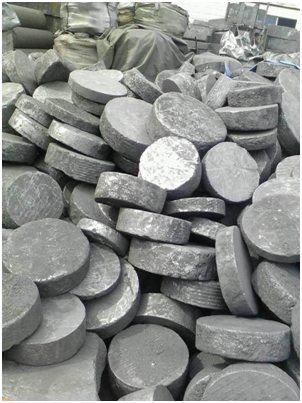
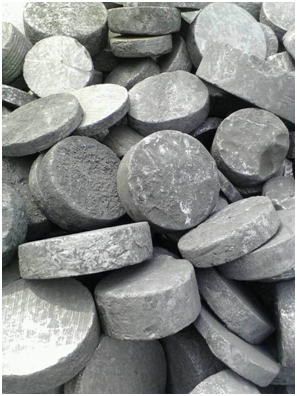
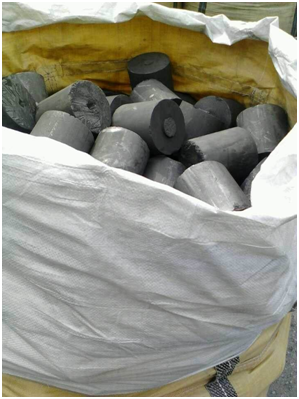

- Q: Intend to go to the barbecue and 35 friends over the weekend, but because it is new, so I don't know how to put the carbon burning, found some web sites are also a few pens, see me confused......Hope which experienced friend to help enlighten me, the best to the specific point, thank you ah!
- The day before yesterday, I had a barbecue with my friends in the scenic spot. It seems that the staff in the barbecue area are using alcohol and newspapers and a little bit of firewood to catch fire
- Q: How is carbon used in the production of plastics?
- Carbon is an essential component in the production of plastics. Plastics are polymers, which are long chains of repeating units. These units are made up of smaller molecules called monomers. Carbon atoms are a key element in these monomers, providing the backbone of the polymer chain. In the production of plastics, carbon is sourced from various petroleum products, such as crude oil or natural gas. These fossil fuels contain hydrocarbons, which are organic compounds made up of carbon and hydrogen atoms. Through a refining process called cracking, these hydrocarbons are broken down into smaller molecules, including ethylene and propylene, which are the building blocks for many types of plastics. Once these monomers are obtained, they are polymerized or chemically bonded together to form long chains. Carbon atoms play a crucial role in this process, as they link together to form the backbone of the polymer chain. The specific arrangement and bonding of carbon atoms determine the properties of the resulting plastic, such as its strength, flexibility, and durability. It is important to note that not all plastics are made solely from carbon. Other elements, such as oxygen, nitrogen, and chlorine, may be present in the monomers or added during the production process to enhance specific properties or introduce desired functionalities. Overall, carbon is a fundamental element in the production of plastics, providing the backbone structure and enabling the versatility and wide range of applications of plastic materials in various industries.
- Q: What are the basic structures of iron carbon alloys?
- Pearlite: a mixture of ferrite and cementite, expressed in P. Microscopically, the cementite and the ferrite lamellae alternate with each other. Under equilibrium conditions, the carbon content of pearlite is 0.77%, and its strength is high. The plasticity, toughness and hardness of pearlite are between cementite and ferrite.A mixture of austenite and cementite at high temperatures, expressed in Le. Its mechanical properties are similar to those of cementite, with high hardness and poor plasticity.Ferrite, austenite and cementite are the basic phases of iron carbon alloy in the five kinds of structures.
- Q: What are the long-term effects of increased carbon emissions on ecosystems?
- Increased carbon emissions have significant long-term effects on ecosystems. One of the most notable impacts is climate change, as carbon dioxide is a greenhouse gas that traps heat in the atmosphere. This leads to rising temperatures, altered weather patterns, and increased frequency and intensity of extreme weather events such as hurricanes, droughts, and wildfires. These changes in climate have numerous negative consequences for ecosystems. For instance, rising temperatures directly affect the physiology and behavior of plants and animals. Many species have specific temperature requirements for reproduction, feeding, and survival, and even slight changes can disrupt their life cycles and lead to population declines or extinctions. Furthermore, increased carbon emissions contribute to ocean acidification, a process where the excess carbon dioxide in the atmosphere dissolves in seawater, forming carbonic acid. This acidification has devastating effects on marine ecosystems, particularly coral reefs and shell-forming organisms like oysters and clams. It weakens their calcium carbonate structures and inhibits their growth and reproduction, ultimately leading to their decline. In addition, carbon emissions influence the distribution and composition of plant communities. As carbon dioxide is a vital component for photosynthesis, elevated levels can enhance plant growth and productivity. However, this can also lead to changes in plant composition and the competitive balance between species, favoring certain fast-growing species over others. This can disrupt the delicate relationships between plants and their pollinators, herbivores, and other organisms, affecting the entire food web. Moreover, increased carbon emissions contribute to the loss of biodiversity. Many species are highly specialized and adapted to specific environmental conditions. As habitats change due to climate change, certain species may struggle to adapt or find suitable alternatives, leading to declines or local extinctions. This loss of biodiversity can have cascading effects throughout ecosystems, disrupting ecological processes and reducing the resilience and stability of entire ecosystems. Overall, increased carbon emissions have far-reaching and detrimental long-term effects on ecosystems. They cause climate change, ocean acidification, alter plant communities, and drive biodiversity loss. It is crucial to reduce carbon emissions and mitigate climate change to protect and preserve the health and functioning of ecosystems for future generations.
- Q: What is carbon fixation?
- Carbon fixation is the process by which carbon dioxide from the atmosphere is converted into organic compounds, primarily through photosynthesis in plants.
- Q: What are some common compounds of carbon?
- Some common compounds of carbon include carbon dioxide (CO2), methane (CH4), ethane (C2H6), propane (C3H8), butane (C4H10), ethanol (C2H5OH), and acetic acid (CH3COOH).
- Q: What is the difference between soil organic matter and soil organic carbon?
- Organic matter is organic matter, but a large part of which is composed of carbon, but carbon content of different organic matter is different, the conversion coefficient is 1.724, most of the organic matter and organic carbon conversion of a mean value is the value.
- Q: How is carbon used in the production of carbon nanowires?
- Carbon is a key component in the production of carbon nanowires due to its unique properties. Carbon nanowires are typically created through a process called chemical vapor deposition (CVD), which involves the decomposition of a carbon-containing precursor gas in a high-temperature environment. In this process, a carbon source, such as methane or ethylene, is introduced into a reaction chamber. The precursor gas is then heated to a high temperature, typically above 600 degrees Celsius, which causes it to decompose. As a result, carbon atoms are released and start to deposit on a substrate material, such as a silicon wafer or a metal catalyst. The carbon atoms in the precursor gas have a tendency to form strong covalent bonds with each other, leading to the formation of a graphite-like structure. However, by carefully controlling the growth conditions, such as temperature and pressure, the deposited carbon atoms can be made to arrange themselves in a highly ordered manner, forming nanowires. The use of carbon as the building block for nanowires is advantageous due to its exceptional thermal and electrical conductivity, as well as its high mechanical strength. This allows carbon nanowires to exhibit unique properties, making them suitable for various applications, such as in electronics, energy storage, and sensors. Overall, carbon plays a crucial role in the production of carbon nanowires by serving as the raw material that undergoes decomposition and subsequent rearrangement to form the desired nanoscale structures.
- Q: Can carbon in barbecue cause cancer? Can carbonated food cause cancer?
- Eat barbecue are carcinogenic, because the meat directly on the heat under the grill, the decomposition of fat droplets in the charcoal, and then with the meat proteins, it will produce a carcinogen called benzopyrene. Experts explained that if people regularly eat food contaminated by benzopyrene, carcinogens can accumulate in the body and cause stomach cancer and bowel cancer.
- Q: What are the different types of carbon-based air pollutants?
- There are several types of carbon-based air pollutants, including carbon monoxide (CO), carbon dioxide (CO2), volatile organic compounds (VOCs), and black carbon (BC).
Send your message to us
Carbon Graphite Electrode RP HD HP UHP Grade
- Loading Port:
- Qingdao
- Payment Terms:
- TT OR LC
- Min Order Qty:
- 10 m.t
- Supply Capability:
- 5000000 m.t/month
OKorder Service Pledge
Quality Product, Order Online Tracking, Timely Delivery
OKorder Financial Service
Credit Rating, Credit Services, Credit Purchasing
Similar products
Hot products
Hot Searches
Related keywords
